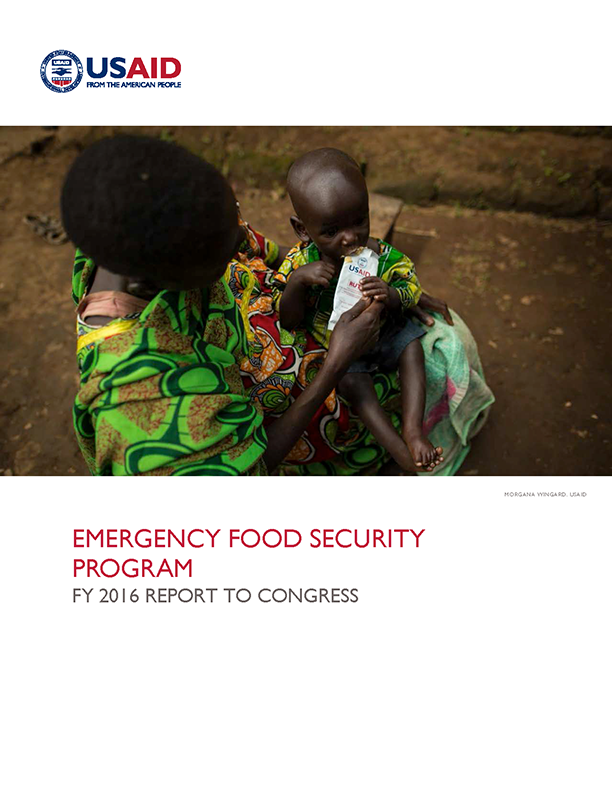Speeches Shim
This report is submitted pursuant to the statutory requirement established by the Global Food Security Act of 2016 (P.L. 114-195), which amended Section 492(e) of the Foreign Assistance Act of 1961 (22 U.S.C. 2292a(e)). The report describes how USAID used FY 2016 International Disaster Assistance funding through the Emergency Food Security Program (EFSP) to address food insecurity in emergency situations through market-based mechanisms such as local and regional procurement (LRP), cash transfers for food, and food vouchers.
PURPOSE AND PROGRAM OBJECTIVES
The U.S. government is the largest donor of food assistance in the world. USAID, through the Office of Food for Peace (FFP), leads these food assistance activities in an effort to reduce hunger and malnutrition - using all available means to respond quickly in emergencies and ensure that people affected by crises have access to sufficient, nutritious food.
In addition to U.S. in-kind food assistance authorized in Title II of the Food for Peace Act, FFP uses market-based food assistance including local and regional procurement (LRP), cash transfers for food, food vouchers and complementary services as important tools for providing food assistance in emergency settings. USAID has implemented such activities using International Disaster Assistance (IDA) funding and authorities since FY 2010, but in FY 2016 EFSP was codified in law as part of the Global Food Security Act of 2016 (Section 7 of P.L.114-195). This new authorization stipulates that the purpose of EFSP is “to mitigate the effects of manmade and natural disasters by utilizing innovative new approaches to delivering aid that support affected persons and the communities hosting them, build resilience and early recovery, and reduce opportunities for waste, fraud, and abuse.”


Comment
Make a general inquiry or suggest an improvement.